New fishing techniques: the "jealous" conflict
Introduction
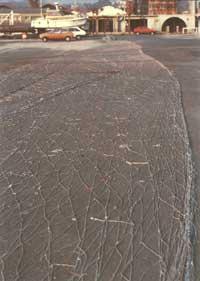
The fishing method used for tuna fishing in the Bay of Biscay has been the so-called xexian. In the years 1940-1950, live bait fishing was established, with northern fishermen using the nets for the first time. Later it spread throughout the Cantabrian Sea.
Other fishing methods, such as fencing nets and longline, have been banned by the agreement signed in 1974 between Spanish and French fishermen.
However, in recent years new techniques have begun that culminated in 1987 with the start of pelagic trawling by French fishermen couples.
The amount of tuna caught by this system has been much higher than that of conventional systems. Therefore, one of the main concerns is whether the current stock of tuna in the sea will be enough to tackle new fishing methods.
Characteristics of new techniques
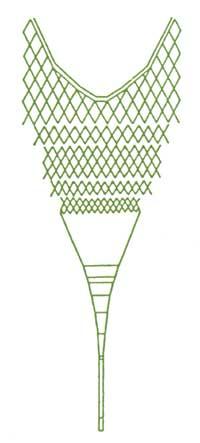
The techniques to be studied in this section are two: pelagic trasdós and pelagic trawling.
Pelagic trasdós is a long network barrier. Cut the way to the fish, which get caught. This network has an approximate length of 2.5 km and serves to fish at any depth. For this purpose it has several floats and weights attached as shown in the image.
Pelagic trawling can work at any depth, from the seabed to the surface. Like all arrastres, the goal is for the fish to be trapped in the bottom through the fish bank.
The net has a four-sided mouth, rectangular section. The horizontal length of the mouth is about 70 m and the vertical height of 38 m. These nets are formed at a high level by the mouth. To keep the mouth open 4 large 500 kg floats and counterweights are used.
Pelagic trawling can be done in two ways, that is, by a boat or by a couple. In the first case, drag doors are used to achieve horizontal opening of the network. In the second just increase the distance between both boats.
The best thing to achieve the best performance is to work in pairs, since the noise generated by the boats leads to confuse the sense of orientation to the fish that accumulates between the two.
Influence of pelagic media
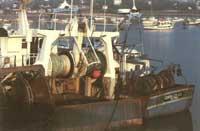
The influence that pelagic means can have on tuna fishing is manifested in three areas.
The amount captured by a face increases. Considering only French ships, the amount of fishing expected for this exercise will exceed 18.9% of last year's total. Thus, in a few years fishing would double, so the level of tuna stock would suffer a dangerous decline.
Technological advances are also used for tuna detection. Sonarra and the sea thermal fronts and satellite isothermal maps have facilitated fish capture.
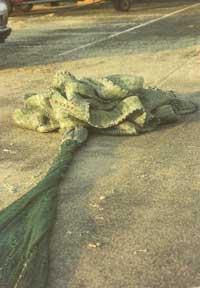
Finally, and as experience shows, working on a certain type of fishing poses a risk of physical interaction. The fisheries previously used, the so-called xexian, and the live bait, were limited to the environment of the boat. From now on, and given that many times a single fish bank is affected, serious incidents can occur. But, more harmful than that, is the change in the habits of fish. The fall of some tuna from the boat to the sea is enough to frighten and disperse it. It is too quick to say that the problem mentioned may arise due to pelagic networks, but, according to the fishermen consulted, this phenomenon is occurring.
Latest suggestions
When renovations have been made in companies, the goal has been to improve production and profits. At sea, production and profits improve year after year. Pelagic networks and technological advances are elements for the “conversion” of the sea. But is the sea a mere productive element? In the case of Euskal Herria there is something else. The character and lifestyle of our country has been directly influenced from the sea. Therefore, considering that the sea is both a productive and living element, we believe that along with new technologies, it is fair to think that the interests of fishermen and fishing villages must be present.
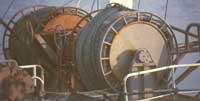
Nevertheless, the advice offered by BITEK goes in line with the balance between the factors mentioned. These are:
- Conducting joint studies among people with different interests on different fishing modalities and their influence on tuna fishing.
- Conduct analytical model studies for the calculation of potential biomass, since only production models have been taken into account to date.
- Analyze tuna behavior against new techniques and especially pelagic trawling. This can be done by direct observation of the submarine.
- Until the realization of previous studies it is convenient to spend time without using pelagic networks.
Finally, we sincerely thank F. All information provided to Tomás Larrinaga and Jose Mª Franco.
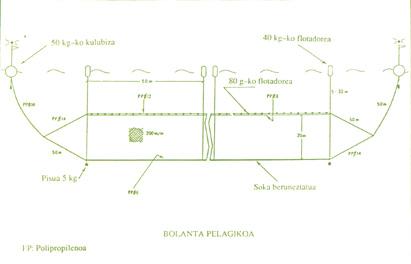
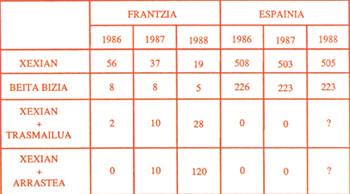
Basque Government We wanted to gather the opinion of all those who have something to do with this problem of the pelagic networks of Arrast and for this reason we have come to Miguel Muruaga, Director of Fisheries of the Basque Government. When asked what is the position of the Government on this issue, he replied: The attitude of the suburbs using live bait is the same. A reasonable study time on this type of fishing should be established to analyze a central point: the compatibility of both types of fishing, live bait and pelagic net. That is, if they can be used simultaneously in the same area and in the same group of fish. Technicians from both sides should participate in this study. Meanwhile, the preparation of pelagic fishing boats should be interrupted. Moreover, in the opinion of Miguel Muruaga, of the cause of conflicts both at sea and on land, the core of the real problem, the compatibility or incompatibility of fishing modalities, has been disfigured and has been mistakenly posed as a problem of survival of stocks. When we asked him about the steps taken by the Basque Government to solve this problem, he told us that he has worked within the limits set by the Statute. In addition, we must bear in mind that conflict is occurring outside our waters. We went to Brussels and together with the heads of the Fishermen's Guilds, we explained our opinion to the Director of Direct Resources of the EVE, Mr Pirson on 25 May 1988. On the other hand, Brussels is expelling balls out of this conflict and, although Madrid agrees with our position, the exchange of other interests has left aside the problem of pelagic tuna fishing. |
NORTH NOISE On the rainy and windy day, one day of those who can not go out to the sea, we had a talk with a fisherman from San Juan de Luz who gave us no name. He said: The sea is everyone's. We, the Basques, were the first to cultivate this Basque coastline. Much of our history has been made at sea. Ondarroa, Pasaia, Hondarribia, San Juan de Luz, etc. are peoples who have lived from the sea and the sea. Every day the fishermen have taken a piece to the sea and brought their lives forward. It can be said that there has been a balance between sea and land. However, in the last ten years new interests have emerged in the world of fishing. Pelagic nets, many horse fleets, catching small fish, etc. are a sample of the change of interest that has occurred in the world of fishing. The low fisheries that work here have the same shape as those in the south. Therefore, there is no conflict between us. Pelagic nets, flyers and these new arts have been brought by remains of Rochelle, Nantes and other seaports. In San Juan de Luz, five years ago, there were serious disturbances between these trawlers and local catches. As a result of these incidents many families broke up and great enemies emerged. This foreign fleet traveled to Hendaia where it was installed. Over time they have been increasingly accepted, when people have seen that it is a “good business”. However, for us these good businesses are nothing more than “bread today, hunger tomorrow”. On the other hand, we believe that going against new techniques is closing your eyes. Therefore, we do not go against these pelagic networks and other similar arts, but we believe that all this should be articulated through technical studies. In conclusion I would say that this struggle is not between Spanish and French fishermen. Moreover, there are no contradictions between the interests of Basque fishermen. The struggle is a struggle between business companies, in which both Spanish and French and Basque companies are involved. |
ANJEL URESBERUETA (Association In 1986, when the French start fishing with pelagic nets and ruffles, the problem arises. As their traditional fleet has disappeared, they try to make the most of the trawlers that have remained. The slightest fishing for hake and similar fish during the summer make the tuna come very well at this break. Tuna fishing is free, that is, there are no quotas. Therefore, anyone can catch the amount of fish they want. In the last thirty years tuna fishing has been carried out within a few levels. Between fishing and stock one can say that practically a balance has been achieved. Now, suddenly, if fishing pressure increases (and disproportionately) it is not difficult to think what can happen. On the other hand, with these fisheries it seems that the fish is scared. Therefore, what we ask is to conduct serious research on all this and in the meantime use only the usual fishing means. For our part we have taken some steps. We have maintained relations with the Spanish administration and have been twice in the European Parliament. Although we hope to get some out of all these efforts, this year we have lost. |
Collection of features
- The fertility of pelagic networks (especially nocturnal ones) is demonstrated.
- Traditional means of fishing, except in exceptional cases, are more productive throughout the day than new ones. In contrast, at night they have zero fertility.
- Both conventional and new media affect species of the same age.
- The new media are combined with the old ones, increasing the performance (some night and others day).
- If the use of new media is disseminated, in a few years it will capture twice what is currently being caught.
- New technologies facilitate the detection of fish banks.
- The stock of white tuna can be a few years to a very dangerous level.
- Collaboration between all means of fishing can generate serious physical problems among fishermen. Tuna is a migratory fish and high concentrations occur in very small spaces.
Buletina
Bidali zure helbide elektronikoa eta jaso asteroko buletina zure sarrera-ontzian











